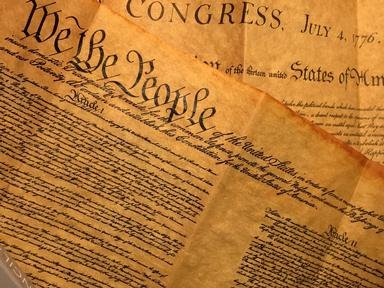Quiz Answer Key and Fun Facts
1. If I asked you what was protected in the 6th amendment to the US Constitution, what should you answer? To be fair I will give you a hint.
2. Amendment 1 to the US Constitution guarantees freedom of what?
3. This Amendment to the US Constitution states that no excessive bail or fines can be required, and that the punishment for a crime should not be cruel or unusual. Which amendment is this?
4. On December 15, 1791, what US state became the last to ratify the "Bill of Rights"?
5. The 3rd Amendment to the US Constitution states that during times of peace no one can be forced to house any military personnel in their homes or businesses unless they desire to. True or false?
6. The writers of the US Constitution and the Bill of Rights were influenced by the following French documents: the Magna Carta, the Petition of Rights, and the Declaration of the Rights of Man. True or false?
7. Which of the following did NOT play a significant role in the drafting of the US Constitution and the Bill of Rights?
8. Which amendment pertains to the fact that, unless specified by the US Constitution, the States have final rights when it comes to self-government?
9. In which city and state was the Bill of Rights signed?
10. Where is the US Constitution and Bill of Rights now kept?
Source: Author
fishymom
This quiz was reviewed by FunTrivia editor
stedman before going online.
Any errors found in FunTrivia content are routinely corrected through our feedback system.

